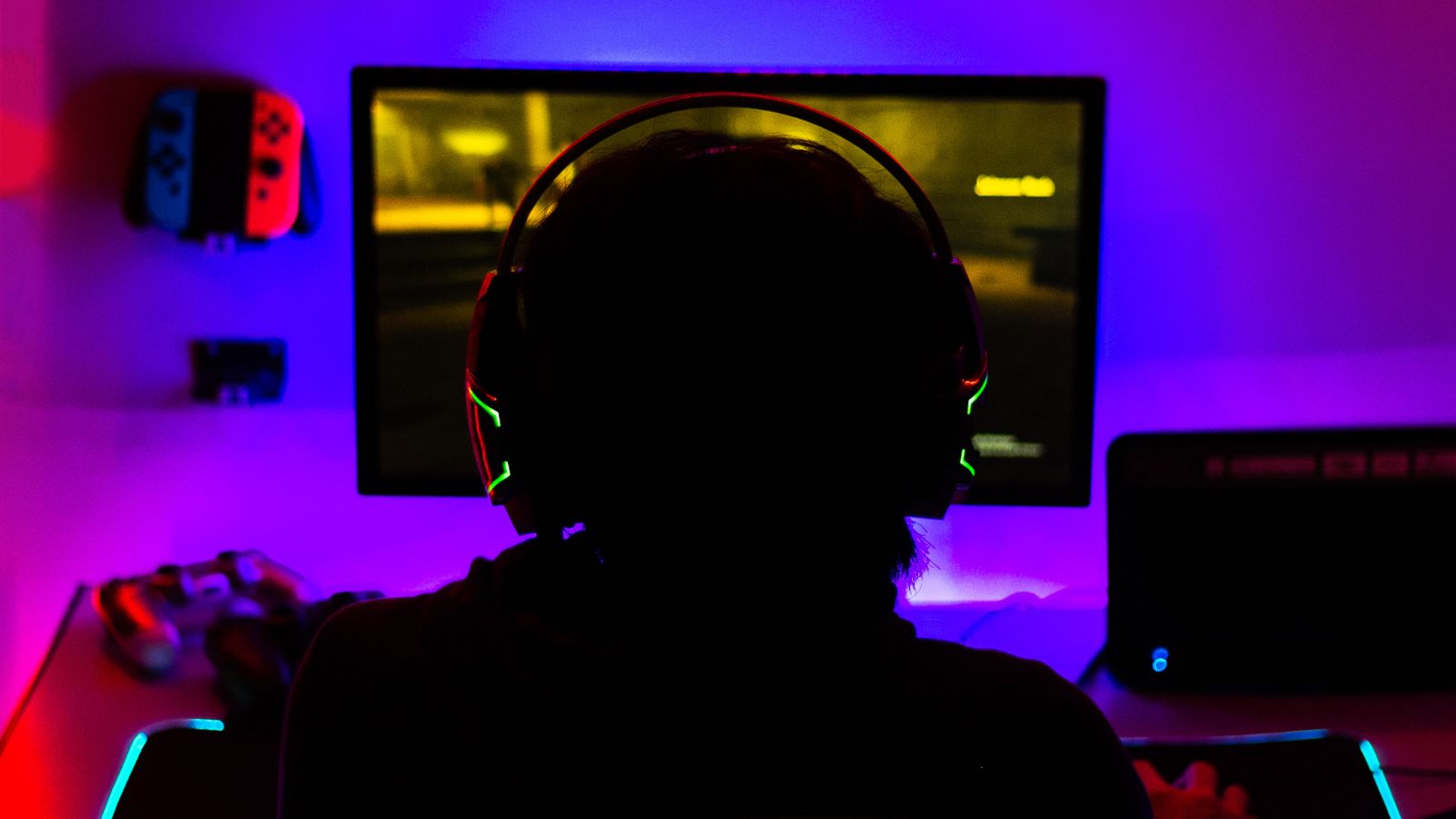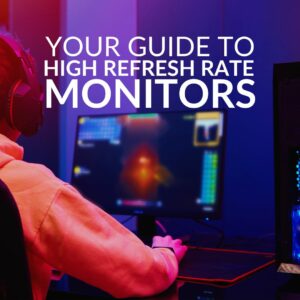OLED monitors boast huge advantages for gamers, streamers, and creatives, capable of delivering stunning high-res images and videos, vivid colour accuracy, and fast response times. But how can you get the very best performance from your OLED display whilst minimising the effects of screen burn-in?
That’s where Overclockers UK comes in! We’ve compiled everything there is to know about OLED displays and screen burn-in, along with our top tips on how to get the most out of your gaming monitor.
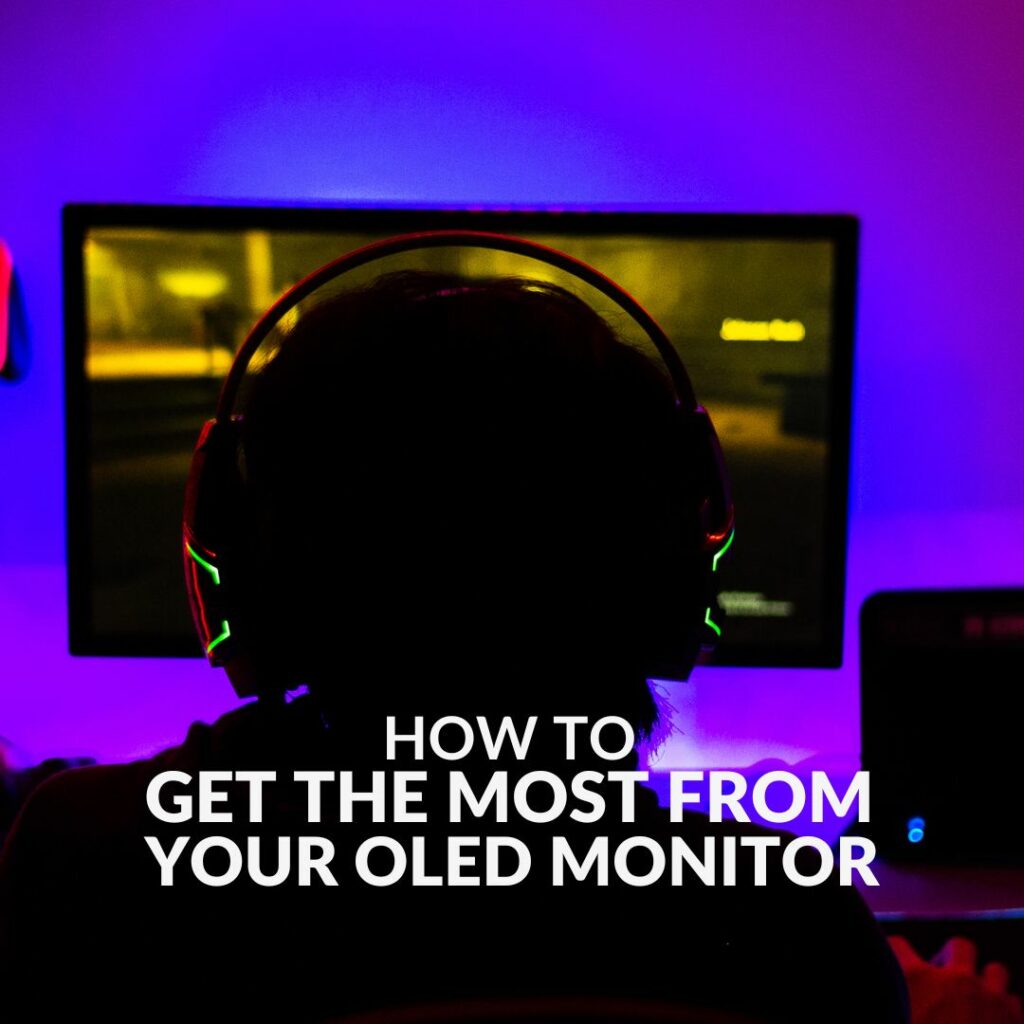

What is an OLED Monitor?
An OLED monitor utilises pixels made from OLEDs (Organic Light Emitting Diodes) instead of traditional liquid crystals. Each pixel is self-lit, removing the need for a separate backlight. This allows for brighter vivid images and video, along with fast response times.
The lack of backlight also makes OLED displays considerably thinner compared to traditional LCD monitors. What’s more, there is no difference in pixel count. An OLED monitor doesn’t consist of more pixels than an LCD. However, an OLED does offer sharper, high-res res visuals with true to life colour accuracy. All of which is perfect for gaming, streaming, and creatives.
Why is an OLED Monitor Good for Gaming?
OLED monitors boast huge advantages for gamers, no matter what their favourite genre or gameplay style is.
With an OLED display, you can sit back and enjoy crisp high-resolution visuals, ultra-fast responsiveness and refresh rates, low latency, and true to life colour accuracy. All of which delivers a stunning immersive gaming experience, allowing you to get lost in all your favourite gaming worlds. This is backed even further by an OLED monitor’s ability to create true blacks. No longer will your gameplay be plagued with misty, non-realistic colours.
What’s more, due to the lack of an integrated backlight, an OLED monitor has far better viewing angles. Whether you sit straight ahead of your screen or just to the left, your view won’t be obstructed by poor lighting, meaning you’ll never miss a moment. Perfect for fans of fast-paced FPS titles and esports games.
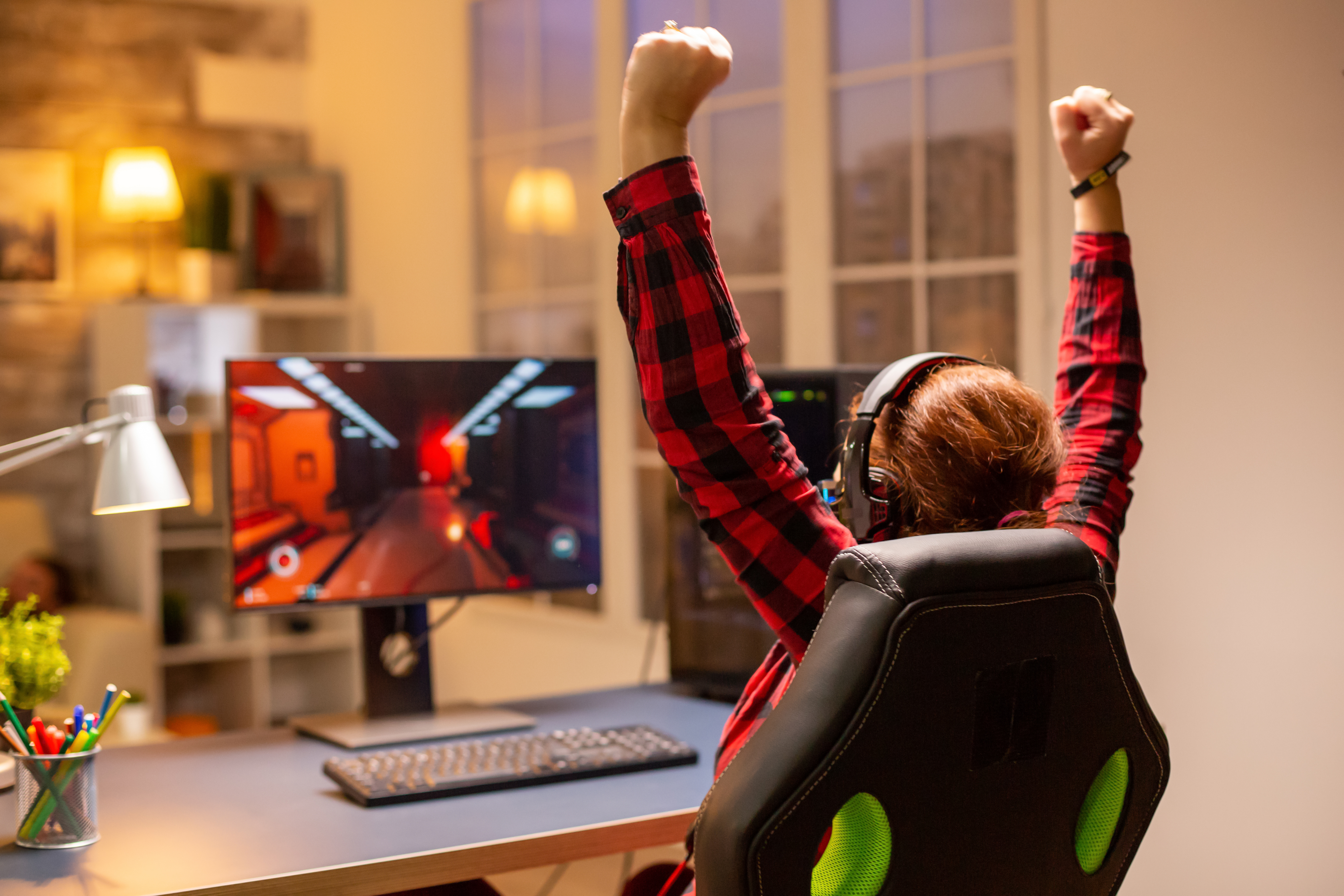
Advantages and Disadvantages of an OLED Monitor
Advantages
- High-resolution images
- Better viewing angles
- True to life colour accuracy
- Ultra-fast response times
- Thinner display
- Long lifespan – 28,000 hours for red and green OLEDs
Disadvantages
- Reports of screen burn-in
- Often more expensive than traditional LCD monitors
What is Screen Burn-in?
The most common fault found with OLED monitors is burn-in. Screen burn-in is often caused by leaving a static image on an OLED display for multiple hours at a time, along with gradual degradation of the pixels. The longer an OLED pixel is illuminated, the dimmer it will appear alongside a lesser used pixel.
Screen burn-in is easy to spot and is typically a visible mark or ghosting that is permanently fixed on your screen, no matter what channel or game you are playing. This could be anything from a channel logo to an in-game UI.
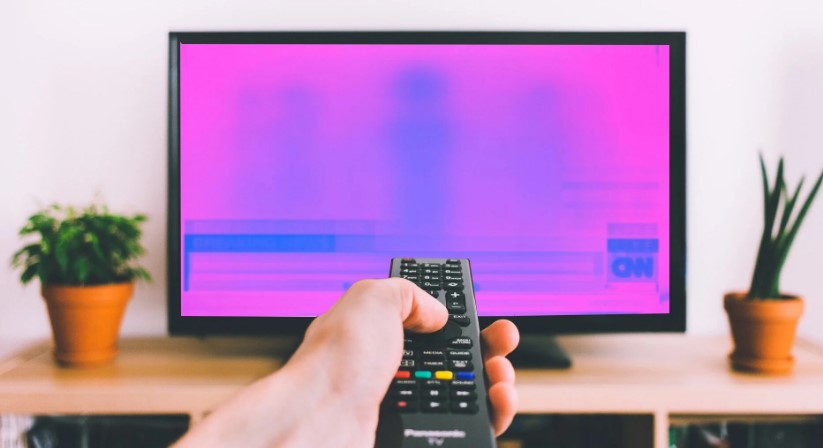
To avoid burn-in there are so many integrated tools and tricks that you can use to help prevent any long-lasting damage. You’ll want to check the manufacturer’s website or any written manuals that come with your OLED monitor to see what screen burn-in protection comes with your chosen display. Here are a few innovative protection features that manufacturers use to combat the issue.
Pixel Cleaning:
Pixel Cleaning is an integrated technology that calibrates any issues that can be caused by your display being turned on for a long time, including screen burn-in. The process typically takes several minutes, and your monitor won’t be available to use whilst Pixel Cleaning is taking place.
Pixel Refresher:
Pixel Refresher automatically detects any deterioration by periodically scanning your monitor’s pixels. There are two types of Pixel Refresher – automatic or manual.
Automatic is dependent on your display’s condition. Pixel Refresher will automatically run after either four or two thousand hours of consistent use. When Pixel Refresher is scanning your display, you’ll typically see a scrolling horizontal bar down the screen. This process lasts for an hour. Alternatively, you can opt to run Pixel Refresher manually. You can choose to do this either when you spot any signs of screen burn-in or when your display sends you a reminder after two thousand hours of use.
Screen Shift:
Screen shift has been designed to reduce the potential of screen burning from fixed images. If you’ve had a fixed image on your display for a long period of time, Screen Shift will automatically move the pixels in the static area to reduce any risk.
Screen Protection:
Some OLED displays come with an integrated ‘Screen Protection’ setting. Typically, ‘Screen Protection’ consists of some form of Pixel Shift technology, which automatically moves any displayed pixels slightly to avoid a consistent static image.
Our Top Tips for Getting the Most from Your OLED Monitor
In addition to the integrated burn in prevention tools, there are a few simple tips you can follow to maintain your OLED display and ensure you get the best possible performance out of your monitor.
We’ve included a few of these tips below.
- Avoid playing games or watching videos which feature fixed images for long periods of time
- Reduce your monitor’s brightness. Avoid maxing out your monitor’s brightness completely. A high brightness setting will cause pixel degradation notably faster and contribute to screen burn in.
- Periodically change what’s on your screen.
- Enable a screen saver or a sleep timer.
- Don’t leave your screen paused for an extended period of time.
- If you are leaving your PC for a few minutes, close your monitor down. This allows the pixels to cool down and prevents unnecessary usage.
- Opt to hide your taskbar. The consistent presence of the static taskbar over a long period of time can cause burn-in.
- Use a True Black background for your desktop.
- Make sure you regularly update the firmware to ensure you have the latest prevention tools.
- Check your manufacturer’s warranty to see if screen burn-in is covered
Upgrade to an OLED Monitor!
Ultimately, an OLED monitor is great for gaming, streaming, and content creation. Like all gaming monitors, they have their pros and cons. What you choose all depends on your individual preferences.
If you are looking to upgrade to an OLED monitor, we’ve included our top OLED display recommendations below. Alternatively, if none of these OLED displays suit your needs, you can also shop the entire range of OLED monitors by clicking the button below.
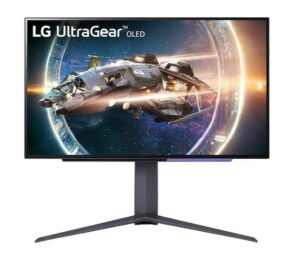
LG UltraGear 27’’ 27GR95QE-B OLED Widescreen Gaming Monitor
- 27” gaming monitor
- OLED
- 2560 x 1440 resolution
- 240Hz refresh rates
ASUS ROG Swift PG27AQDM 27’’ OLED Widescreen Gaming Monitor
- 27” gaming monitor
- OLED
- 2560 x 1440 display resolution
- 240Hz refresh rates


Gigabyte F027Q3 27” OLED Gaming Monitor
- 27” gaming monitor
- OLED
- 2560 x 1440 display resolution
- 360Hz refresh rates
In the meantime, be sure to read through our dedicated gaming monitor guides to ensure you find the perfect monitor that suits your gaming set up.
TDLR: Watch How to Get the Most from Your OLED Monitor
We all know reading isn’t cool, so why not watch how to get the most from your OLED monitor instead?
